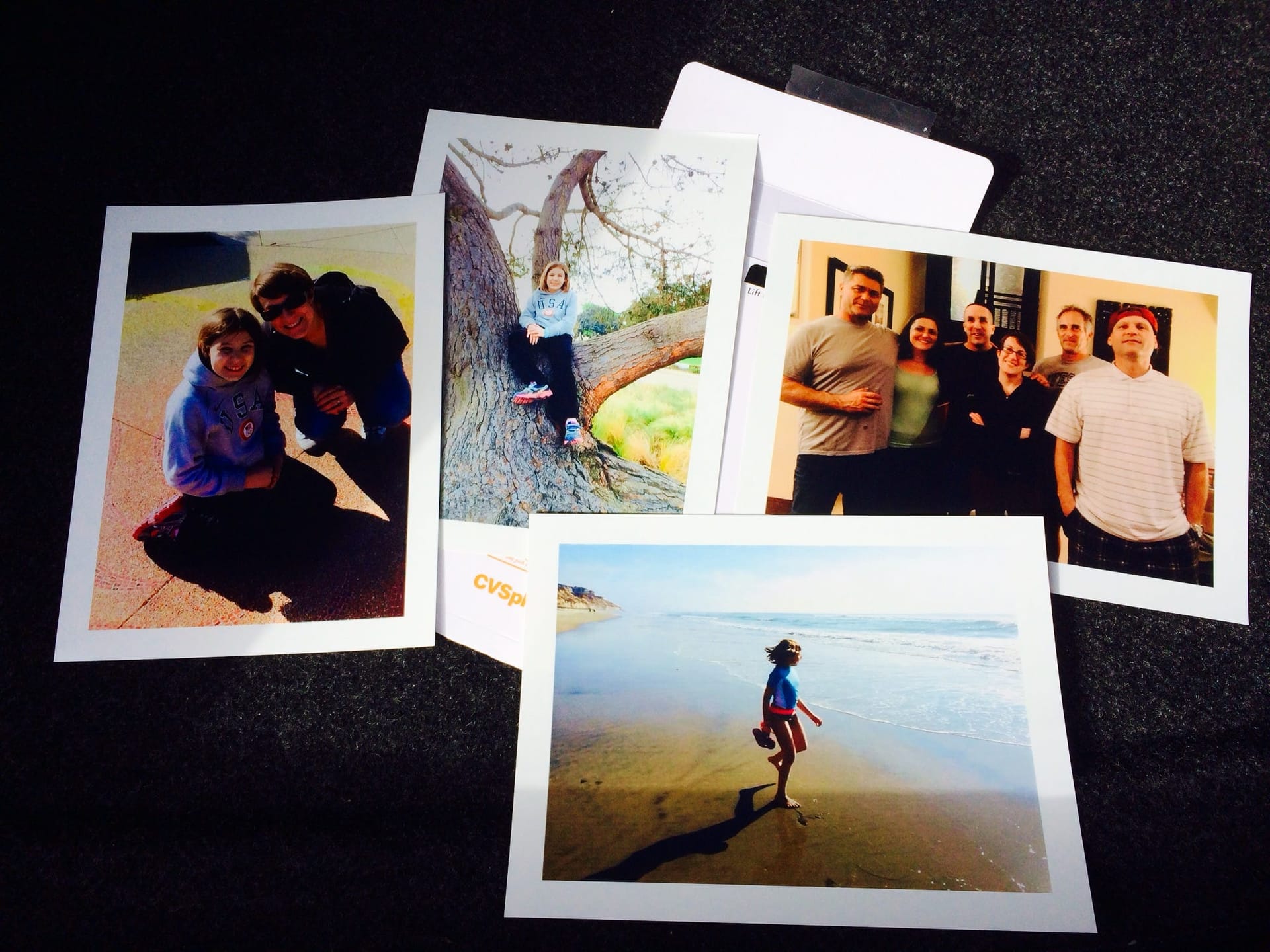CVS and the Nerd/Normals gap

Once in a while, someone asks me a technology-related question I’ve never considered before. In this case it was “Hey, can you figure out how to print a few iPhone photos from this trip for my Dad?”
We’re on a trip, but it’s not a vacation. My Father-in-law recently suffered a heart attack, head injury, and stroke, and as a result was currently in a coma. We wanted to bring family photos to have at his bedside when he woke up.
I knew how I’d answer this if I was at home. In my home office at my nerd castle, I could pick photos on a gloriously large monitor through Photo Streams of recent iPhone shots. I could do some color correction, light editing, then prepare them for printing on high-quality photo paper in a dedicated printer.
When asked the same question on a sidewalk a thousand miles from home, my only answer was “Maybe? Probably? Give me a minute. This should be possible.”
Nerds and Normals
Working in the technology industry for over 17 years now, I’m used to knowing that my immediate surroundings are not what regular people are used to. I had broadband at home 15 years ago, I had WiFi in 1999. When people ask me a question about how to accomplish something or how I managed to rig something up, I usually have to answer that it’s complicated, and replicating it could require a lot of work, expense, and patience (The Internet Of Things could currently be called The Internet Of Things That Mostly Work Sometimes). I wish it wasn’t like this, but when you play with bleeding edge stuff in the tech world, it starts as mostly user-unfriendly and somewhat-reliable before it goes mainstream.
On the plus side, since the early 2000s there’s been a closing of that gap. WiFi is easy and available to everyone. You can watch Netflix on multiple devices via multiple means in most homes. Phones are mini-computers with powerful features available to anyone that can afford one. Things are getting better, and I welcome this trend.
The only problem is, when confronted with a challenge I have to ask myself not how I’d do it given my own toolset, but how we can accomplish something using mainstream, existing infrastructure.
A chain of Pharmacies Innovating? Who knew?
Back to the sidewalk question. I did what anyone else would do: a quick Google search for “iPhone photo prints local” and the first result was CVS, a nationwide chain of pharmacy stores in the US.
There are several pharmacy store chains in the US and they’re all in various states of decline. They used to be a place not only to pick up your medications, but you could get photos developed in less than a day, there were aisles of strange batteries for any sort of electronics, and some even featured ice cream counters and other sorts of snacks. These days, my local Rite-Aid chain location is a half-empty supermarket building nearly a block long with a For Lease sign out front.
My first Google result lead to a page on the CVS site saying I could download their app, send photos to be printed and pick them up with same day service by 3pm (which was about five hours in the future). Another tap and I installed and launched their app. It was insanely simple after that. A click on the Photo icon, then a click to select photos from my phone’s recent album to print. I picked four, modified the desired print size, and sent them off to the CVS location the app found for me, which was just a few blocks from our hotel. I didn’t even need to create an account with CVS, merely adding my name to the photos was enough and the entire process took about two minutes from my first Google search.

Here’s the incredible part: ten minutes after I uploaded the photos, they were printed and waiting for me down the street for about $6 (four 5x7 prints). The photos could use some color tweaking and they’re a little blurry from either the low resolution printer or small file uploading, but it doesn’t take away from how amazing the entire interaction was. A couple minutes on my phone, a few taps, and ten minutes later we had hard copy prints we picked up on the way to the hospital, some featuring shots I took less than an hour before with my phone.
Moving parts are just opportunities for failure
In this day and age, as economies move faster than the architecture that contains them, I’m impressed to see CVS offering a service that gives them a leg up in an declining market. CVS properly figured out I was on an iPhone and offered up their app, their app allows you to complete your task in the fewest steps, then automatically prints the results at a store where the staff’s only interaction with the order is to hand you photos while completing the sale. There were so many parts to this (sites, apps, the cloud, stores, printers, staff) that could have gone wrong, but they made a bunch of good choices that gave good enough results in a very short period of time.
Software and hardware rarely delight me anymore and my tolerance for failures is so high that it’s usually my default expectation. The fact that a mainstream pharmacy chain got their large website, custom iPhone app design team, national network of stores, and networked printers to all work together to accomplish something reliably in such a short period of time using just a single app totally astounds me.
Subscribe to get new posts in your inbox



